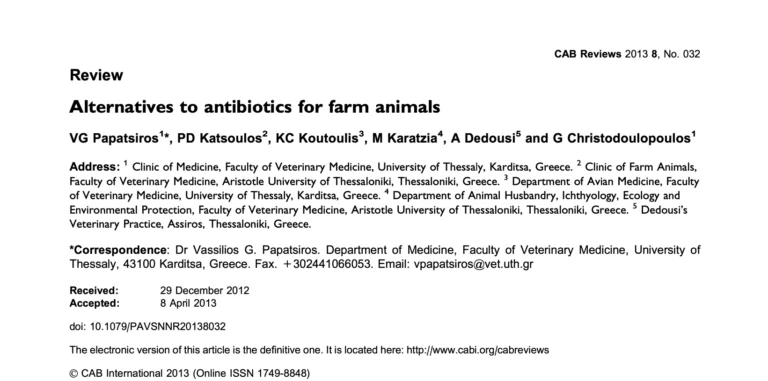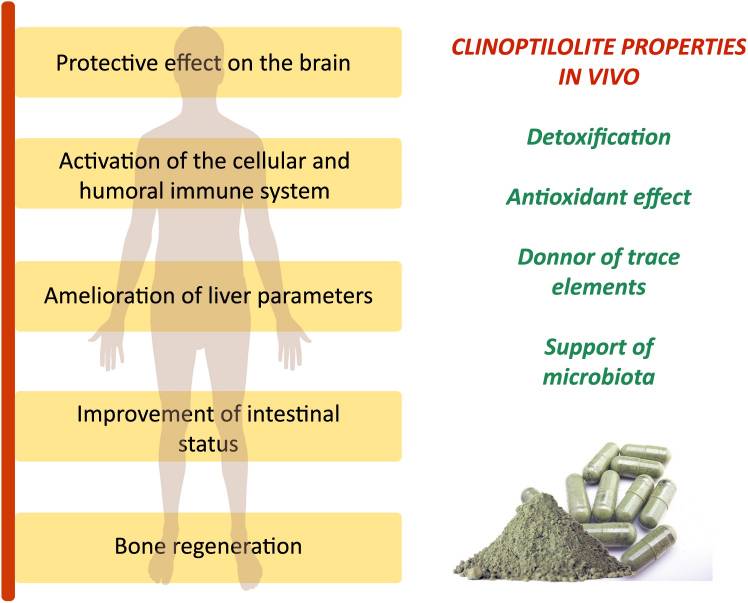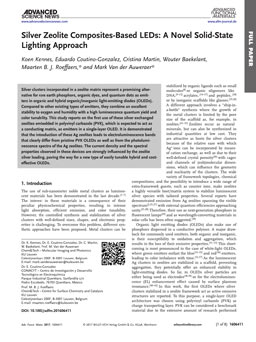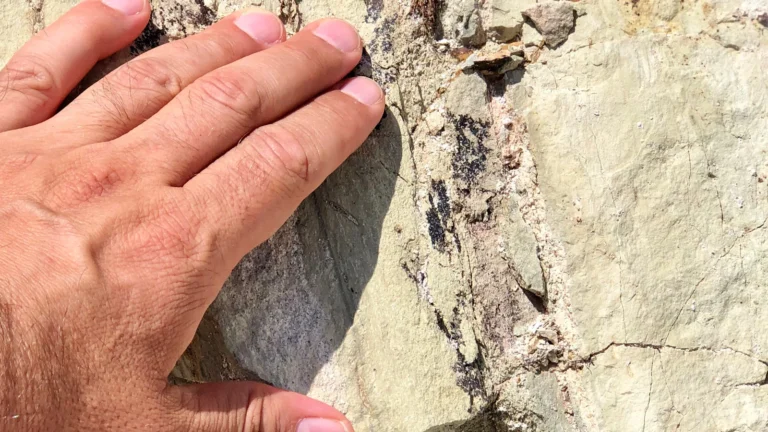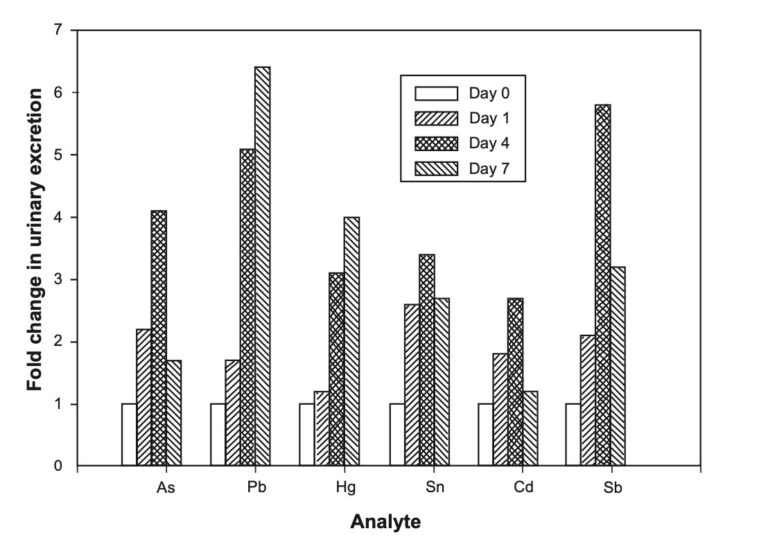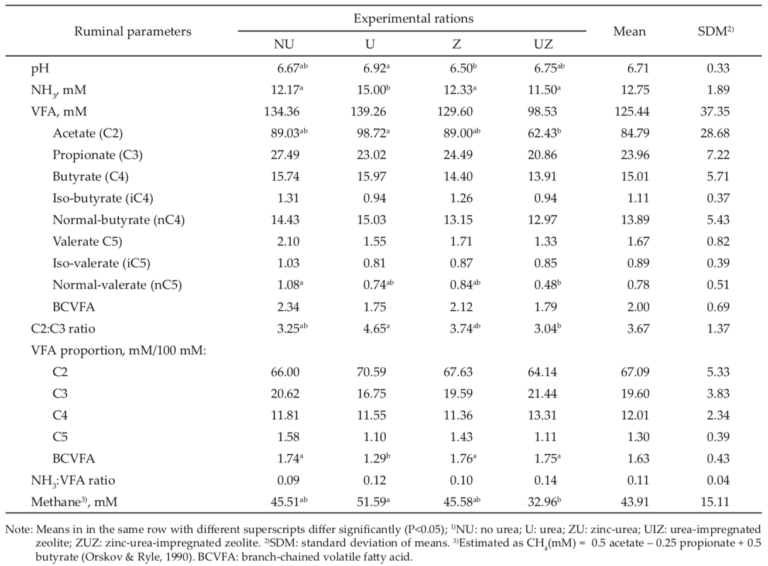The natural clinoptilolite zeolite has attracted much interest in recent years for its important role in human detoxification. This is due to its unique physico-chemical properties, such as its large surface area, porosity and ion exchange capacity. These characteristics allow zeolite to selectively adsorb and exchange a range of ions, including heavy metals and other toxins, thereby reducing their bioavailability and facilitating their excretion by the body. In this way zeolite helps on many levels to maintain good health of the human body.
Ion exchange and detoxification
The primary mechanism by which clinoptilolite helps detoxification is through ion exchange. The crystal structure of clinoptilolite provides a high cation exchange capacity (CEC), allowing it to exchange its native cations (such as Na+, K+, Ca2+ and Mg2+) with toxic metal ions such as Pb2+, Cd2+ and Hg2+ present in the body. This ion exchange process is selective, effectively binding and immobilising heavy metals, thereby reducing their absorption in the gastrointestinal tract and enhancing their elimination through faeces and urine (1).
Adsorption of large molecules
In addition, clinoptilolite acts through adsorption, using its porous structure to trap larger organic molecules and various harmful substances, which are then eliminated from the body through the digestive tract. This broad-spectrum detoxification capacity is particularly beneficial for trapping mycotoxins and other environmental pollutants (2).
The antioxidant effects of clinoptilolite further support its detoxifying properties. It can remove free radicals and reduce oxidative stress in the body, which is associated with many chronic diseases and the harmful effects of various toxins. By limiting oxidative damage, clinoptilolite zeolite not only aids detoxification but also supports overall cellular health (3).
Treatment of Leaky Gut Syndrome
Clinoptilolite zeolite also plays a critical role in maintaining gastrointestinal health by adsorbing toxins and other harmful substances, which helps maintain the integrity of the intestinal barrier (inner surface). This is important for the prevention of “Leaky Gut Syndrome”, a condition where increased intestinal permeability allows toxins and pathogens to enter the bloodstream. By protecting the inner surface of the gut, clinoptilolite reduces inflammation and promotes overall digestive health (4).
Stimulation of macrophage and phagocytic cell function
In addition, its immunomodulatory effects have been demonstrated through research showing that clinoptilolite can enhance the function of macrophages and other phagocytic cells necessary for the body’s defence against pathogens and foreign substances (5).
Oncology and zeolite
In the field of oncology, clinoptilolite has shown promise as an adjuvant therapy in cancer treatment. Its ability to bind and neutralise toxins can be particularly beneficial for patients undergoing chemotherapy, as these treatments often cause significant oxidative stress and produce toxic by-products. By reducing toxic load and oxidative damage, clinoptilolite may help reduce the side effects of chemotherapy, improve patients’ quality of life and potentially enhance the effectiveness of cancer treatment.
Some in vitro studies have suggested that clinoptilolite may exhibit direct anti-cancer properties by inducing apoptosis in certain cancer cell lines, although more research is needed to confirm these effects in vivo (6).
Metabolic syndrome, hypercholesterolemia, diabetes and zeolite
The potential benefits of zeolite extend to the treatment of metabolic disorders such as hypercholesterolemia and diabetes. Preliminary studies suggest that clinoptilolite zeolite may affect lipid metabolism and glucose homeostasis by modulating the activity of enzymes involved in these processes. For example, some animal studies have shown that supplementation with zeolite can reduce blood cholesterol levels and improve insulin resistance, indicating its potential as an adjunctive therapy in metabolic syndrome (7).
Neuroprotective effects of zeolite
In addition, clinoptilolite zeolite has shown possible neuroprotective effects. Neurodegenerative diseases, such as Alzheimer’s and Parkinson’s, are linked to the accumulation of toxic metals and oxidative stress in the brain. By binding toxic metals and reducing oxidative damage, clinoptilolite could potentially play a role in preventing or slowing the progression of these diseases. Some studies have shown that clinoptilolite can cross the blood-brain barrier and exert its detoxifying effects within the central nervous system, although further research is needed to fully understand its mechanisms and efficacy in this context (8).
Safety in the use of zeolite
The safety profile of clinoptilolite is well documented, with numerous studies demonstrating that it is generally safe and well tolerated by the human body when used appropriately. Its natural origin and non-toxic nature make it an important choice for people seeking natural detoxification methods.
Clinoptilolite zeolite is not absorbed into the body from the bloodstream, but works within the gastrointestinal tract, reducing the risk of systemic side effects (4).
Mycotoxins and zeolite
In veterinary medicine, clinoptilolite is used to improve the health and productivity of animals. It is usually added to animal feed to reduce the absorption of mycotoxins and heavy metals, thereby protecting animals from toxin-related diseases. This application not only improves animal health and welfare, but also improves the quality and safety of animal products for human consumption (2).
Detoxification from the polluted environment
Environmental detoxification is another critical application of clinoptilolite zeolite. In areas with high levels of environmental pollution, clinoptilolite can be used to clean up contaminated soil and water. Its ability to adsorb heavy metals and other pollutants makes it an effective tool for environmental remediation, helping to reduce human exposure to environmental toxins (6).
In conclusion, zeolite’s multifaceted approach to detoxification positions it as a valuable tool for maintaining human health. Its ability to bind a wide range of toxins, support gastrointestinal and immune system health, manage metabolic disorders, enhance cancer treatment, protect renal and nervous function and mitigate environmental pollution enhances its effectiveness in a wide range of applications. Ongoing research and clinical trials will further clarify the full potential of zeolite in promoting human health and wellness.
References
- Ames, B. N., & Gold, L. S. (1990). The causes and prevention of cancer: the role of environment. *Environmental Health Perspectives, 86*, 233-238.
- Mumpton, F. A. (1999). La roca magica: Uses of natural zeolites in agriculture and industry. *Proceedings of the National Academy of Sciences, 96*(7), 3463-3470.
- Pavelic, K., & Hadzija, M. (2003). Medical applications of zeolites. *Journal of Molecular Medicine, 81*(9), 667-679.
- Ivkovic, S., Deutsch, U., & Schwarz, B. (2004). Dietary supplementation with the tribomechanically activated zeolite clinoptilolite in immunodeficiency: Effects on the immune system. *Advances in Therapy, 21*(2), 135-147.
- Lamprecht, M., Bogner, S., Steinbauer, K., Schuetz, B., Greilberger, J. F., Leber, B., … & Schippinger, G. (2015). Effects of zeolite supplementation on parameters of intestinal barrier integrity, inflammation, redox biology, and performance in aerobically trained subjects. *Journal of the International Society of Sports Nutrition, 12*(1), 40.
- Pavelić, K., Hadžija, M., Bedrica, L., Pavelić, J., Šutalo, S., & Pivac, B. (2001). Natural zeolite clinoptilolite: New adjuvant in anticancer therapy. *Journal of Molecular Medicine, 78*(12), 708-720.
- Rehakova, M., Cuvan, A., Dzivak, M., & Jablonsky, M. (2004). Zeolites and their applications in agriculture. *Chemick Technolog, 4*(2), 47-59.
- Katsoulos, P. D., Panousis, N., Roubies, N., & Karatzias, H. (2005). Effects of long term feeding dairy cows on a diet supplemented with clinoptilolite on certain haematological parameters. *Veterinary Record, 156*(15), 534-537.
